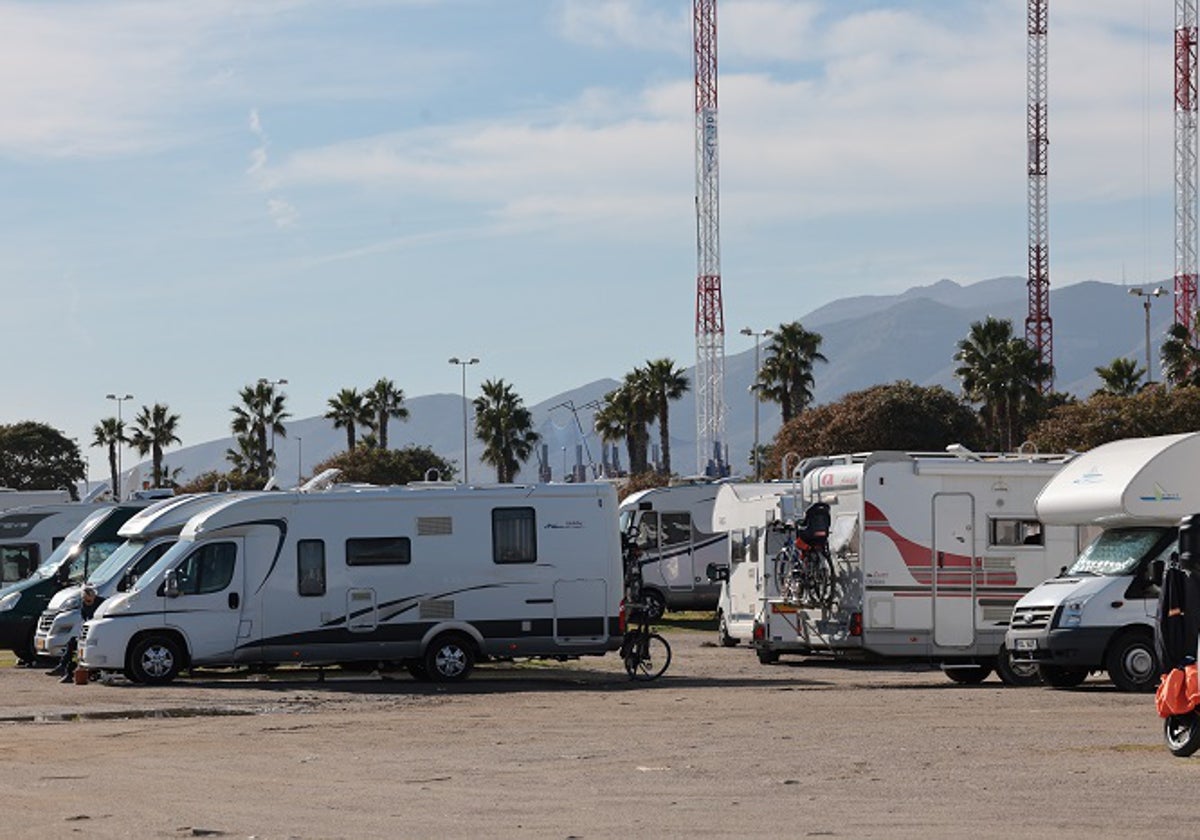Motorhomes return to the coast bringing more visitors to the Costa del Sol with no fixed checkout date
The good weather in Malaga acts as a magnet for the travellers and many of them are parked up on unofficial sites, even though there are no facilities for waste management
It's a normal weekday in Malaga and just after ten o'clock in the morning. Rolf Neskens, tanned skin and sporting a white beard, opens the door to his home and lets the sun caress his face. His home, curiously enough, has no street address or postcode. It is just a yellow number plate that gives away where he comes from: the Netherlands. "My wife and I have been travelling in our motorhome since November. We arrived in Malaga ten days ago. The idea was to stay two days and then move on," he explains.
Those two days, for the time being, have become indefinite. Rolf and his wife are retired and their two children have long since flown the nest. Displaying a rather reserved nature, they refuse to pose for a photo and cut the conversation short. Their story is not an isolated one on the seafront near the Martin Carpena sport arena. There are many more. Sometimes the local police arrive and evict them. A few days later, like the myth of Sisyphus, motorhomes take over the esplanade again.
It is a reality that is spreading. The motorhomes have not only returned to this area of Malaga city. These homes on four wheels also abound in other places. To mention Sacaba as a hotspot at this point is nothing new. We should also mention the esplanade of Arraijanal, close to the Sol Guadalmar hotel. What used to be a few motorhomes have now become dozens. The effect has turned the place into a makeshift campsite, with the beach just a few metres away. There is a municipal sign prohibiting the parking of motorhomes, but it has had no effect.
Torremolinos
A few kilometres from here, just across the municipal border of Torremolinos, is La Cizaña. The views that stretch out from there are pretty special. First is Playamar and Los Álamos. Then, in the background, the Bajondillo can be glimpsed. Although the sea is only a few paces away, the edge of the road is more reminiscent of a mountain pass during the Tour de France. There is one motorhome parked behind another and then another. Only here it's not fans camping out to cheer on their cycling idols. They are travellers taking advantage of Malaga's benevolent climate to avoid the harsh weather that the winter months bring in most parts of Europe. A sign in Spanish, English and French reads: "No camping". To make things crystal clear there is the symbol of a motorhome crossed out on that same sign.
The proliferation of these vehicles puts municipalities and their capacity to enforce municipal ordinances to the test. The example of La Cizaña shows how the bans are not materialising in reality. In some cases, the phenomenon itself raises questions that highlight the complexity of the issue: does removing motorhomes from one area amount to transferring the problem to a neighbouring town or district? Does allowing this to continue not translate into unfair competition for campsites, where these vehicles have places to park in exchange for paying money?
The wellbeing of those who travel by motorhome often clashes with that of local residents. Eduardo Castillejo is the general secretary of Guadalmar's neighbourhood association (Almar). Every day of the year, he says, there are motorhomes parked up both in his neighbourhood and in the area of La Cizaña. The main concern is related to waste management. "Neither of these areas has an infrastructure for motorhomes. In the best of cases, the excrement that accumulates ends up in the sewage system", he complains. The residents are asking the council for greater control of the presence of these motorhomes.
What does the municipal ordinance say? As long as no awnings or tables are set up, motorhomes are considered to be just like any other vehicle parking by the seaside. Official city hall sources confirmed this to SUR. The exception to this is the specific signage. The images and testimonies accompanying this information show that these signs are ignored on a daily basis.
Although motorhomes are regarded the same as any other vehicle that parks up, the same city council sources also insist that, just like a car, they cannot stay in the same place for more than 14 days, which is difficult to monitor in practice. Is moving the motorhome a few metres already resetting that clock? The answer is unclear.
No official campsite
Despite the increase in the number of motorhomes, the capital of the Costa del Sol does not have a specific campsite for such vehicles. The nearest one is in Cala del Moral. The facilities there do have the necessary infrastructure for the treatment of organic waste. Furthermore, there is another element to take into account in Malaga. Areas such as the Martín Carpena esplanade, often taken over by motorhomes, are marked in red as areas where parking of all kinds is to be discouraged. Such systems are widespread in other European countries and are common practice in crowded areas.
That there is no campsite for motorhomes or park-and-ride facilities in Malaga city is evident from a visit to the areas that still offer ample parking space for vehicles of all kinds. The signs with a cross over the image of a motorhome with real motorhomes visible in the background, in a way, represent the irony of daily life along these stretches of the Costa del Sol.

